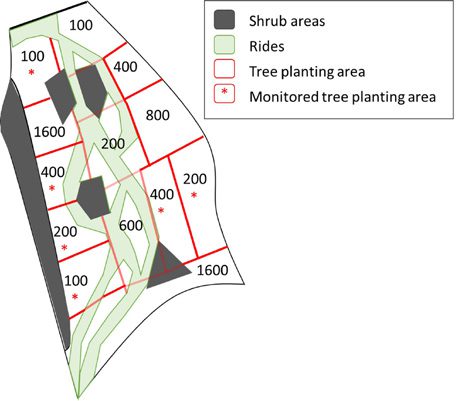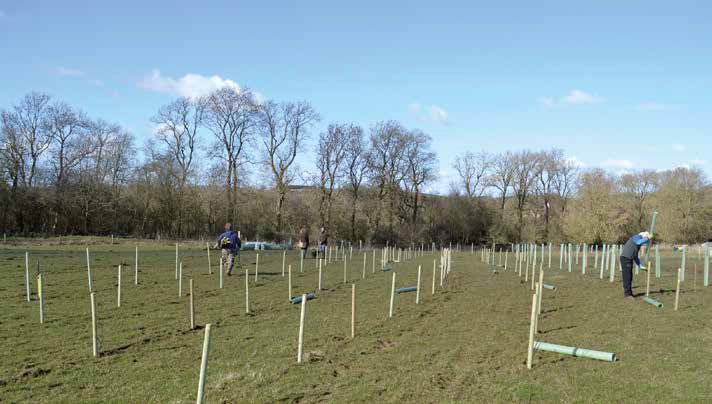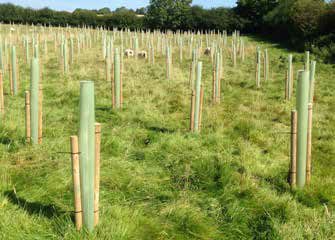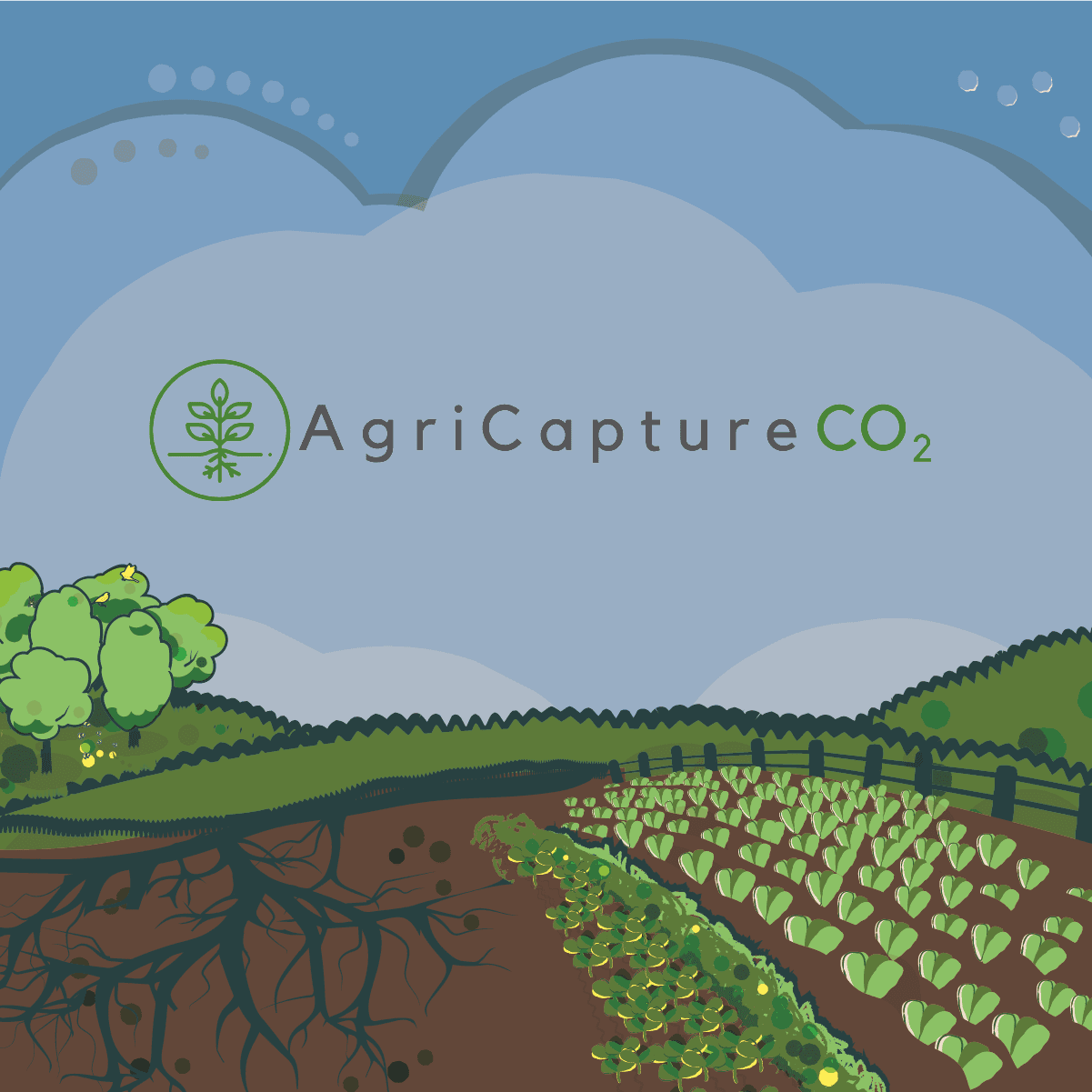Agroforestry
Identifying and understanding multiple benefits from novel land management practices has been at the heart of our research activity throughout the life of the Allerton Project. There are few better examples of such beneficial practices than agroforestry – ‘The practice of deliberately integrating woody vegetation (trees or shrubs) with crop and/or animal systems to benefit from the resulting ecological and economic interactions’ (Burgess & Rosati, 2018)
Agroforestry is a polyfarming system which attempts to replicate natural ecosystems to enhance the functionality & sustainability of the farmed system and build resilience into farm businesses by stacking multiple land uses on a single space. The main types of agroforestry are silvopastoral (combining trees with grazing livestock) and silvoarable (combining trees with combinable crops), though shelter belts, woodland grazing and even hedgerows can all be considered as agroforestry systems.
Given the competing pressures of climate change and net zero, the opportunities provided by carbon sequestration, biodiversity net gain and nutrient offsetting markets, and the benefits provided for welfare in a warming climate, agroforestry will inevitably experience a renaissance in the 21st century landscape.
Integrating trees into pasture
A trial at the Allerton Project

The deliberate introduction of trees and shrubs into farming systems is known as agroforestry. Silvopasture (introduction of trees and shrubs into grazing systems) is known to provide a range of benefits to livestock enterprises, including shade, shelter and browse.
However, trees also compete for space, light, water and nutrients with productive swards and we need to understand this trade-off better. Agroforestry has the potential to increase the productivity of land by optimising the use of three-dimensional space, above and below ground. Is there an optimum tree planting density that can deliver these benefits? It is these potential benefits and trade-offs that are being investigated by the Allerton Project and its research partners with support from the Woodland Trust.
What did we do?
We devoted a field at the Allerton Project’s research and demonstration farm at Loddington, Leicestershire to a trial in which plots were planted with different tree densities in March 2016, ranging from 100 to 1,600 trees per hectare.
The trees were planted at six different densities in replicate blocks within the field (at 100, 200, 400, 600, 800, 1600 trees per hectare). The lowest of these represents the maximum tree density normally associated with agroforestry, while the higher densities are in line with those adopted for woodland planting schemes. Tree species comprised aspen, bird cherry, crab apple, wild privet, field maple, hornbeam, small leaved lime, oak, silver birch, sweet chestnut, walnut and wild cherry.
What are we measuring?
The areas allocated for long-term monitoring are indicated by asterisks in FIGURE 1, and are two 100 trees per hectare plots, two 200 trees per hectare plots and two 400 trees per hectare plots.
The data we are collecting include:
- Light penetration as a proxy for tree canopy closure.
- Sward volume to see how this changes as the tree canopies develop.
- Soil nutrients, carbon and organic matter as these may increase as the trees mature, bringing up nutrients from deep in the soil profile and depositing leaves.
- Earthworm numbers and species composition. We might expect both to increase as the tree cover develops.
- A visual assessment of soil structure and quantitative assessment of compaction using a penetrometer. Increases in soil organic matter, combined with biological activity, are likely to reduce compaction and improve soil structure.
- Water infiltration rates using a double ring infiltrometer. These are expected to increase as soil structure improves, with potential benefits for flood risk management and water quality in streams.
Territory mapping of songbirds at five-year intervals as bird numbers and species composition are likely to increase. We have not yet recorded any differences between plots with different tree densities in the six years of monitoring. Damage to the trees by sheep has slowed their establishment and will have delayed any impacts of the trees on the soil and sward but the result is a strong baseline against which to measure future change.

FIGURE 1: Layout of field showing the distribution of plots with different tree planting densities and shrub areas where livestock are excluded.

Tree planting in 2016.
What do farmers think?
Owing to the complex design of the trial, introduction of the trees into the field meant that it was no longer possible to take a hay crop, but grazing could continue.
Concerns expressed by farmers included difficulties associated with the spraying of weeds such as thistles, limitations on vehicle access, and there were concerns about difficulties observing sheep during routine shepherding in the highest tree densities. Some of these are associated with the design for research purposes and can be avoided by appropriate design in more practical settings.
Practical Lessons
High densities of sheep caused damage to trees by browsing of the tops as they emerged from the guards and we had to introduce taller guards and reduce sheep stocking to a very low density to allow establishment.
Greater involvement of the farmers and grazier in planning the project would have increased ‘ownership’ of the project by them and resulted in more effective planning and management of both sheep and trees.
Serrated tops on the taller guards have resulted in abrasion and weakening of some trees.
Survival has been reasonably good but where necessary we have carried out some replanting to maintain initial tree densities.

High density planting (1,600 trees per hectare).
Looking ahead
Work at the Allerton tree trial in the immediate future will include:
- More detailed analysis of impacts on soil organic carbon (SOC), including the effect of distance from trees and hedgerows Introduction of fixed sampling points within plots to monitor change over time.
- Visual evaluation of soil structure (VESS) and sward productivity from an expanded list of treatments, including new control plots (no trees).
- Measurement of earthworm populations in shelterbelts.
Download the full report into Integrating trees into pasture – a trial at the Allerton Project here.
Other Considerations
Where can a farmer go for further information and support if want to implement agroforestry?
The Allerton Project welcomes groups of interested individuals to see this project and others at the research and demonstration farm at Loddington, Leicestershire. Go to the Visits page for more inforamtion and to book.


